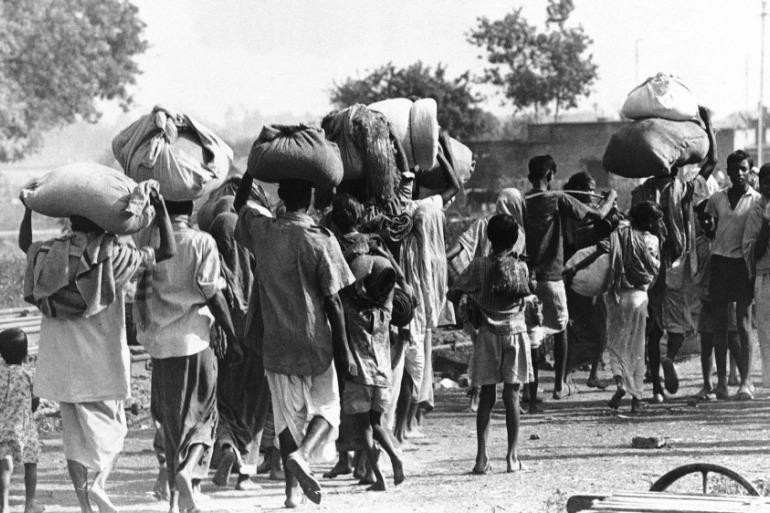A series of vengeful persecution, kidnappings, killings, rapes, and destruction of predominantly Hindu population of East Pakistan was done by the Pakistani Army with the objective of ethnic cleansing and quashing the Hindu culture and religion.
It was in August 2017 when Myanmar’s Army launched a deadly crackdown on Rohingya Muslims and enforced thousands of them to cross the border and enter Bangladesh. With the massive influx of Rohingya refugees, Bangladesh came out to be the champion of humanitarianism for sheltering the refugees belonging to the Rohingya community. The move by the Bangladeshi government was empathetic and was motivated by their own history that took place 50 years ago when thousands of Bengalis were forced to leave their lands due to the atrocities caused to them by the West Pakistani soldiers.
It was the year 1971 when the Pakistani Army systematically launched a genocide on the Bengali-speaking population of then East Pakistan (now Bangladesh). The Urdu-speaking population committed atrocities on its own people living in its Eastern wing and this was majorly because of the geographical abnormality that was present between the Western and Eastern parts of Pakistan separated with more than 1300 miles.
The two geographically distinct parts of Pakistan got united under the motto of religion during the partition of 1947, but soon got separated because of the difference in their religious interpretation of Islam and non-identical cultures. The Urdu-speaking majority present in the Western part of Pakistan always pursued Bengali Muslims of its eastern wing as inferior and therefore, intended to turn them into perfect and faultless Muslims. This desire of the Urdu-speaking majority ultimately led them towards the idea of ethnic cleansing of the Bengali people from their Eastern Wing.
West Vs East:
Bangladesh’s War of Independence or preciously West Vs East war started when the Pakistani government officials wanted to change the cultural identities of the Bengali Muslims. The close bond of Bengali Muslims with the Hindus present in the eastern wing of Pakistan was one of the major reasons why Pakistani people didn’t recognise people of Eastern Pakistan as their own people who belong to the same piece of land.
The differences between East and West Pakistan were visible soon after Pakistan got separated from India in 1947. On February 25, 1948, the demand for seeking national language status for Bengali along with English and Urdu was passionately raised in Pakistan’s National Assembly, but the demand was soon shouted down by Mohammed Ali Jinnah himself and the demand for recognising Bengali as an official language was rejected.
Later, on March 24, 1948, Jinnah, the founding father of Pakistan declared Urdu as an official language of the country which instigated a massive outrage among the Bengali population and gave rise to the Bengali Language Movement. Finally, after two years of mass protests, Bengali was granted an official status. But, this fight of Bengali people for language and cultural identity led their path for fighting for their freedom from the Urdu-speaking elite population of West Pakistan.
The major rift that created the division between the two parts was the first-ever election that took place in the history of Pakistan. When Awami League led by Sheikh Mujibur Rahman won a landslide victory, securing an absolute majority of more than 160 seats in the Pakistani National Assembly, the majority in Western Pakistan was not ready to give the power to the Bengali population. The Western elites were not at all ready to hand over the power to the people they always considered inferior. In response to the failure received by the ruling elites of West Pakistan in the general elections, they by force tried to get back their land and butchered thousands of Bengalis living in Eastern Pakistan.
Ethnic cleansing by persecuting the Hindu population in East:
The persecution that the Pakistani Army carried out on the people of East Pakistan went on for nine months in 1971. The killings, kidnappings, rapes, and destruction were all done primarily by targeting the Hindu community living in the region. The persecution was launched with the objective of ethnic cleansing and quashing the Hindu culture and religion in their so-called ‘territory’.
Hindus present in East Pakistan suffered one of the most brutal and worst genocides in history. The year 1971 is considered one of the darkest years in the history of Bangladesh as more than three million people, mostly Hindus, were slaughtered with no mercy on women and children. Women were raped in thousands of numbers and were used as weapons of war by the Pakistani Army. The rapes were even justified by the men of the Pakistani Army by calling women as maal-e-ghanimat (booty of war).
The Bangladeshi Hindus were subjected to brutal atrocities and destruction during the freedom struggle of Bangladesh. The atrocities launched on the Hindu population of East Pakistan was a clear case of ethnic cleansing by the majority population of West Pakistan. With this, the question still persists that why ethnic and religious belongings often the cause of conflicts and wars? Why ethnically motivated brutality has always existed throughout history and why religious minorities have to always suffer in the world of majorities?

